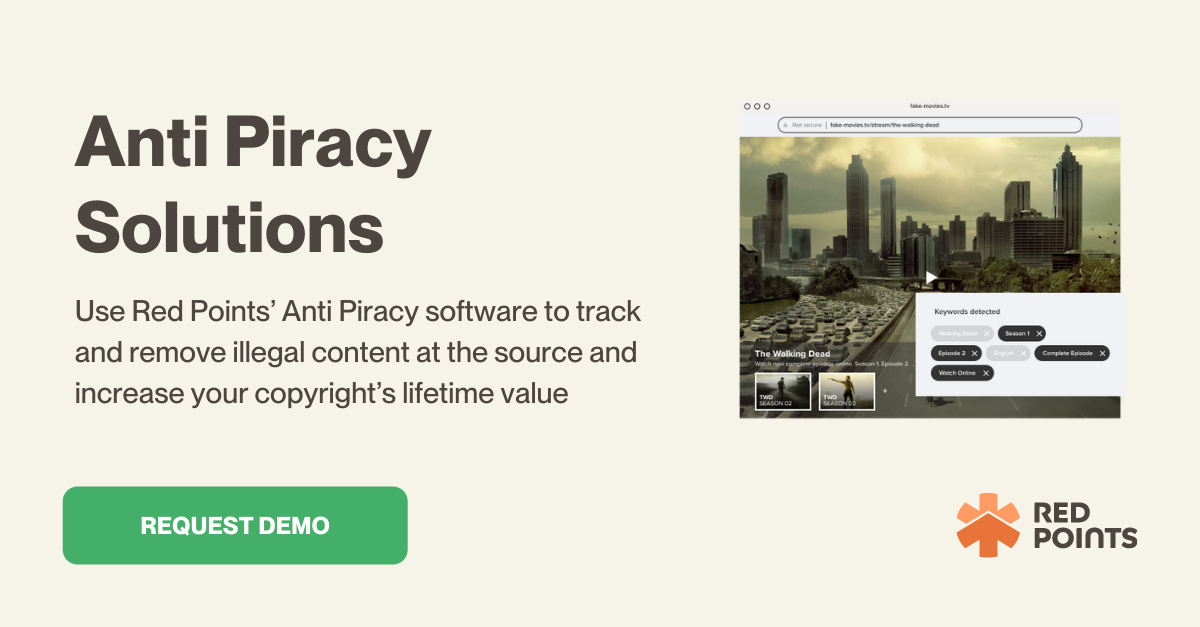
Table of Contents:
Last updated on: February 26, 2024
Piracy in gaming has been around for as long as games have existed. Digital piracy is ubiquitous within the industry for console, PC, and especially mobile games. Today, piracy in gaming has more to do with artificial intelligence and cutting-edge technology than selling bootleg discs out of car trunks.
In recent years, free-to-play games (F2P) have gained popularity, with 36% of game developers focused on free-to-play projects. Despite what the name may suggest, the free-to-play arena is exceedingly lucrative – in 2023 the global F2P mobile gaming market is worth over $83 billion alone.
Naturally, this amount of money attracts pirates and bad actors looking to earn a quick buck. But, what is the scope of the piracy problem in F2P gaming? And how can your business protect its gaming assets from scammers?
In this article, we’ll be exploring whether free-to-play gaming is piracy-free by highlighting a few key topics:

To understand the scope of the problem it is important to understand the scope of the F2P gaming industry as a whole. 85% of all gaming revenue comes from free-to-play games, amounting to over $100 billion worldwide every year. The popularity of F2P is both a blessing and a curse because the industry is plagued by piracy on all levels.
Here are a few of the key issues:
The nature of F2P games means that in-game items and currency are the primary targets for digital pirates. They can’t profit by stealing and selling off the base game but they can draw immense amounts of profit by pirating in-game microtransaction items and other content locked behind paywalls.
Loot boxes, character skins, and new levels are regular features of F2P games. These features are attractive targets for gaming pirates because they often represent the true value of F2P games. Players need such items to unlock the potential of the game. If these items are costly but can be easily pirated the users will be incentivized to access them illegitimately.
Gray markets allow users to sell unused game keys online for a small profit. While many of these gray markets are legitimate websites, some have been used to facilitate black market deals and piracy. Here pirates can capitalize on sought-after gaming assets and operate with relative freedom and anonymity.
When it comes to F2P game piracy, gray markets can be used to sell in-game items, microtransaction features, and currency. There are a variety of third-party sites that operate gray marketplaces so it is difficult for gaming companies to police the second-hand sale of their assets (many of which should be protected by licenses).
In most cases, gaming piracy leads to poor user experiences. F2P games are meant to be accessible to all kinds of users. Most F2P games are frequently updated to get rid of bugs, provide new features, and refine the user experience.
When gaming piracy is allowed to proliferate gaming publishers and developers can’t maintain a quality user experience. If users pirate the games they will receive no updates and no support. This will usually result in a bad gaming experience that may influence their opinion of the game as a whole.
The prevalence of piracy within gaming is affecting the way consumers view developers and games. Consumers are less connected to brands when they can easily acquire pirated versions of their games.
If gaming companies are weak on piracy this also shows a lack of care for the user experience and an inability to preserve their gaming brand. This may lead to operational problems moving forward, as F2P becomes a less economically viable option.
In the past, some have argued that piracy has the potential to increase a game’s player base and improve the visibility of the game. Some have said that piracy is a necessary evil. However, particularly to F2P games, the negative consequences of piracy outweigh the potential positives.
Potential Positives
Potential Negatives
While the argument for increased visibility may apply in some cases to paid games, this is simply not the case for F2P games. Many free-to-play games are available on a variety of marketplaces, platforms, and devices. Most of them are visible and accessible to all kinds of games.
The gaming user base is not made wider by pirates who target in-game purchases and microtransactions. While piracy may boost game visibility for paid games, it’s not the same for F2P.
1. Consumer education
While some gamers will happily play pirated games, many also want to have the best legitimate gaming experiences possible. One way to combat F2P piracy is by educating your gaming audience about the risks of piracy. Tell your customers about the potential for malware, scams, and poor user experiences.
Show them how piracy can devastate a gaming business. Additionally, by being open about microtransactions, release dates, and extra content you will make it easier for consumers to trust you. By investing in consumer education you help to reduce the demand for pirate games and protect your F2P gaming assets.
2. Licenses and end-user agreements
Today, many digital games have licenses and end-user agreements (EULA) to protect them from piracy. Both methods will outline how the F2P game can and cannot be used. Usually, they will prohibit unauthorized distribution, copying, or modification.
License keys are particularly common for PC and mobile games. With a unique license key, you can track exactly who has accessed and downloaded a game. In theory, this is a solid anti-piracy strategy. However, it is not foolproof and many digital gaming pirates are happy to ignore or circumvent these agreements and security methods.
3. Legal action
You can also combat free-to-play piracy by beginning legal action. This may be easier said than done because most gaming pirates aren’t operating in plain sight. However, once you’ve found the offending individuals, courts around the world have shown a willingness to crack down on gaming piracy.
For example, in recent years Nintendo has succeeded in a number of high-profile cases against groups creating and selling pirated copies of their games. They’ve shown that suing bad actors for IP infringements will help businesses mitigate the impact of piracy and recover lost profits.
4. Report potential piracy to marketplaces and authorities
You can also turn to gaming and app marketplaces for help. Many F2P games are distributed on major marketplaces like Steam, Apple’s App Store, G2A.com, and the Google Play Store. Each platform will have its internal reporting system to which you can submit evidence of piracy and information about your gaming assets.
Beyond marketplaces, you can also report instances of piracy to law enforcement. If the piracy has taken place in the US or in relation to US-based assets you can file an FBI report to the Internet Crime Complaint Center.
5. Use anti-piracy software
Anti-piracy software is another key weapon to use against F2P piracy. On your own, it is difficult to track pirates across multiple platforms and jurisdictions.
Any manual methods of detection and removal can be expensive and time-consuming. Ultimately, an automated anti-piracy solution is the best way to detect and takedown gaming pirates.
While many of the above strategies to combat F2P piracy can be effective in certain circumstances, the best way to provide comprehensive and cost-effective protection is with an automated anti-piracy solution.
Red Points’ Anti-Piracy software is the ideal solution to help businesses safeguard F2P games from piracy. Trusted by over 1,300 companies, Red Points is committed to increasing the lifetime value of your copyrighted work and protecting it from digital pirates.
Here’s how our anti-piracy software works:
At this initial stage, our advanced software scans the internet to track down unauthorized copies of your F2P game. Utilizing automated bots, we search linking sites, cyberlockers, gaming marketplaces, apps, social media, streaming sites, and P2P platforms. This ensures comprehensive coverage, leaving no stone unturned in the pursuit of locating pirated content.
Once potential infringements are identified, the validation process begins. You can choose to manually oversee this step or leverage our automated system tailored to your specific criteria. This stage is crucial for confirming the legitimacy of suspected pirated content before taking further action.
After validation, the identified pirated content is flagged for delisting. This step involves hiding or removing the pirated content from public view, effectively cutting off its accessibility to potential users. This immediate response is vital in minimizing the impact of piracy on your game.
Enforcement is about taking action against the piracy. This might involve issuing takedown notices, or working with internet service providers and hosting services to remove the content. Our system allows for continuous monitoring and enforcement, ensuring that new instances of piracy are dealt with promptly.
The final stage focuses on evaluation and analysis. Through our dashboards and reporting tools, you can measure the effectiveness of your anti-piracy efforts. This includes analyzing data on identified and removed pirated content, understanding piracy trends, and using these insights to refine your anti-piracy strategy.
This structured approach ensures a comprehensive and effective strategy against F2P game piracy, safeguarding your intellectual property while adapting to the evolving landscape of digital piracy.
Free-to-play gaming piracy is here to stay. It is a profitable area for scammers, especially those who use artificial intelligence and other technology to boost their piracy efforts. In response, businesses need to adopt robust anti-piracy measures to ensure that this gaming sector can sustain success.
In a piracy-prone digital landscape, the best response is to invest in the most efficient technological solutions. An anti-piracy software solution that can track and remove illegal content is a tool that many brands can use effectively to protect their F2P games. To learn more about how Red Points can help your brand fight piracy, request a demo here.
